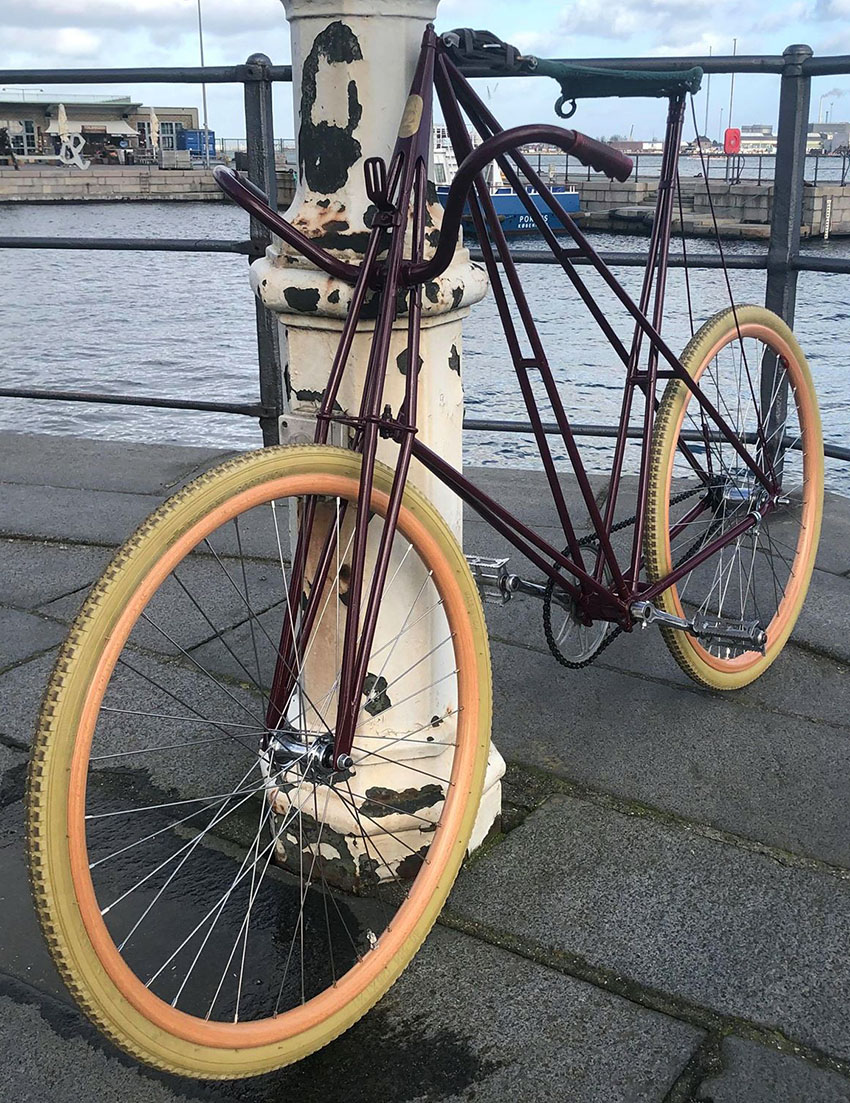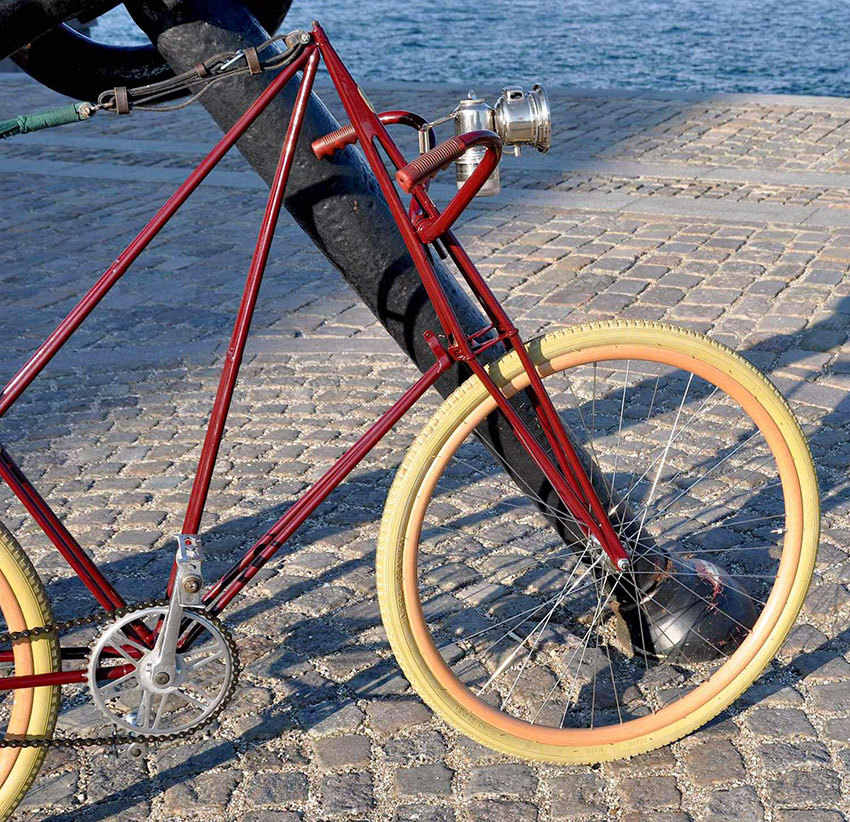
The Dursley Pedersen did not make enough of an impact on the extremely competitive bicycle market in the Edwardian era when it was made, with the result that its production run was cut short. However, a hundred years later, the model has become one of the most sought-after vintage bicycles among collectors. Not only is it delightfully eccentric to look at, but its lightweight frame makes it easy to use and the innovative saddle design makes it the most comfortable old bicycle to ride.
Above you can see the Gentlemen’s Royal Roadster, freewheel, with front rim brake and coaster rear, from the 1905 catalogue. By the 1910 catalogue, this model style was no longer illustrated. But a fixed wheel Road Racer with larger chainwheel was offered in its place.


1913 Dursley Pedersen Cantilever Road Racer
Frame Size #4
Restored, enamelled in Claret
Ghisallo wooden rims, size 26 x 1 1/2″
with Shimano hubs
Frame No 7325.4
(Now sold)

I bought Dursley Pedersen #7325.4 three years ago as frame and forks (with integral handlebar). As you can see at the bottom of the page, it had been this way for the past 50 years or so.
I’d long considered the idea of creating a Road Racer Pedersen and, as the braking system was missing, a Road Racer with coaster brake was a practical option. Doug Pinkerton kindly supplied a chainwheel and saddle. According to their 1905 catalogue, claret was one of the colour options offered by the Dursley Pedersen Cycle Co. The frameset was multicoloured, so a repaint was needed, and Barry Sharman in Framfield did a lovely job, as always.
Next the wheels… the catalogue spec mentioned an option of wooden wheels for an extra 15 shillings. Italian Ghisallo rims seemed a sensible choice – in 1 1/2″ size so I could use white tyres – though unfortunately the rims now cost more than 15/-.
Meanwhile, my friend Marco in Copenhagen told me he was looking for a Dursley Pedersen, so he bought it and ordered the wheels. These are his photos from Copenhagen. Marco ordered the wheels with Shimano hubs as his criterion was for a fast and reliable vintage racer he could use for long-distance rides. Yes, it has looks and performance too.
My friends and I spend a lot of time buying, selling and swapping vintage bikes with each other. Marco now has an 1899 Pedersen from me, so #7325.4 has come back to me again! I have an earlier one in my collection too, so #7325.4 is for sale. But I’m definitely looking forward to riding it at last before it goes off to its new owner…





DURSLEY PEDERSEN FRAME SIZES
SIZE 1………………. 27 1/2″ Inside Leg
SIZE 2…………………… 29″ Inside Leg
SIZE 3…………………… 30″ Inside Leg
SIZE 4………………. 31 1/2″ Inside Leg
SIZE 5…………………… 33″ Inside Leg
SIZE 6…………………… 34″ Inside Leg
SIZE 7…………………… 35″ Inside Leg
SIZE 8…………………… 38″ Inside Leg
One thing I discovered many years ago about early Pedersens is that even if you ride one that’s ‘officially’ too big for you, ie as per the company’s own chart, above, once you’re in the saddle it sinks down so you have no difficulty reaching the pedals or the ground. This one, a Size 4, would suit someone who would normally ride a 22″ frame bicycle. But, also, the saddle can be adjusted up or down via its seat stays.
At its current setting, the distance from the top of the saddle to the ground is 1 meter (39.5″) and the distance from the top of the saddle to the centre of the pedal axle is 75cm (29.5″). The saddle height can be adjusted further, either up (one slot) or down (3 slots).

1910 DURSLEY PEDERSEN CATALOGUE EXTRACTS
































FRAME No 7325.4

You can see in the chart below, compiled in the 1970s, that this Pedersen was marked ‘frame only’. I bought it like that (photo above) in 2017, so it appears to have been stripped down for at least 50 years


on its way to Marco…




SHORT VIDEO: RIDING THE PEDERSEN
1913 Dursley Pedersen Cantilever Road Racer 90










































